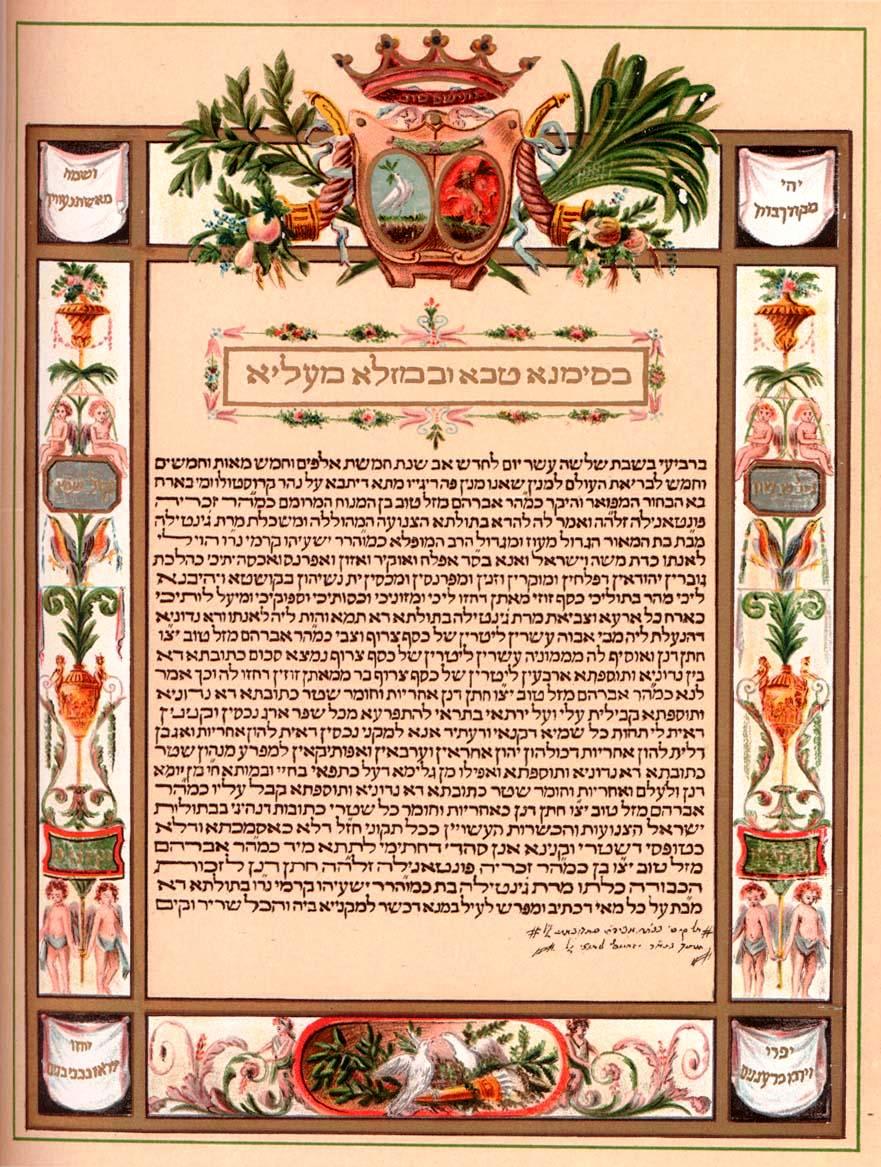Last week we explained the profound importance of the husband’s obligation to provide for the wife in the case of divorce or widowhood. This obligation is not only meant to provide for the wife after married life; it is also, even mainly, intended to secure the bond between husband and wife during married life. This is done by complementing the exalted bond of kiddushin, sanctity, which is the essence of the wedding ceremony with the more mundane bonds of economic dependence, to create a union which is secured at all levels of human experience.
However, this doesn’t explain why this obligation needs to be written. Yet this is a most fundamental requirement. Linguistically, the requirement for writing the ketubah is implicit in its name, which is merely the Hebrew word for “written”. Legally, this requirement is expressed in the words of the Rema on the Shulchan Arukh, who writes that while it is technically possible for the couple to be together if the ketubah obligation is made only verbally, this method may be used only as a last resort in the case of dire necessity. This is so even though such an obligation is in any case valid only when it is temporary and affirmed by witnesses (SA EHE 66:1).
Rebbe Natan of Breslav explains the importance of having a written ketubah. He likens the two different aspects of marriage we mentioned, the exalted and the mundane, to the two aspects of Torah: the written Torah and the spoken tradition. The written Torah is the eternal, unchangeable source; the spoken tradition is characterized by concrete directives, by adaptation to circumstances, and by human participation.
Likewise, the root, the ultimate source, of marital unity is certainly in the awesome holy union created by the kiddushin; but this has to find expression in concrete expressions of affection and attachment and adaptation to circumstances, as shaped by the unique characteristics and experience of husband and wife.
This idea is expressed by the necessity of writing down the ketubah. Just as the spiritual root of the couple’s economic relations as expressed in the ketubah is in the eternal mystical union which unites them, so its legal root is in something written, and therefore eternal and unchangeable.
Paradoxically the ketubah, which seemingly provides for the possible termination of the marriage bond, is actually predicated on its expected permanence. We are careful to make this document one which will last forever, in our trust that it will never be needed.
(Based on Likutei Halakhot Breslav, Kiddushin 3:17)
Rabbi Asher Meir is the author of the book Meaning in Mitzvot, distributed by Feldheim. The book provides insights into the inner meaning of our daily practices, following the order of the 221 chapters of the Kitzur Shulchan Arukh.
The words of this author reflect his/her own opinions and do not necessarily represent the official position of the Orthodox Union.



